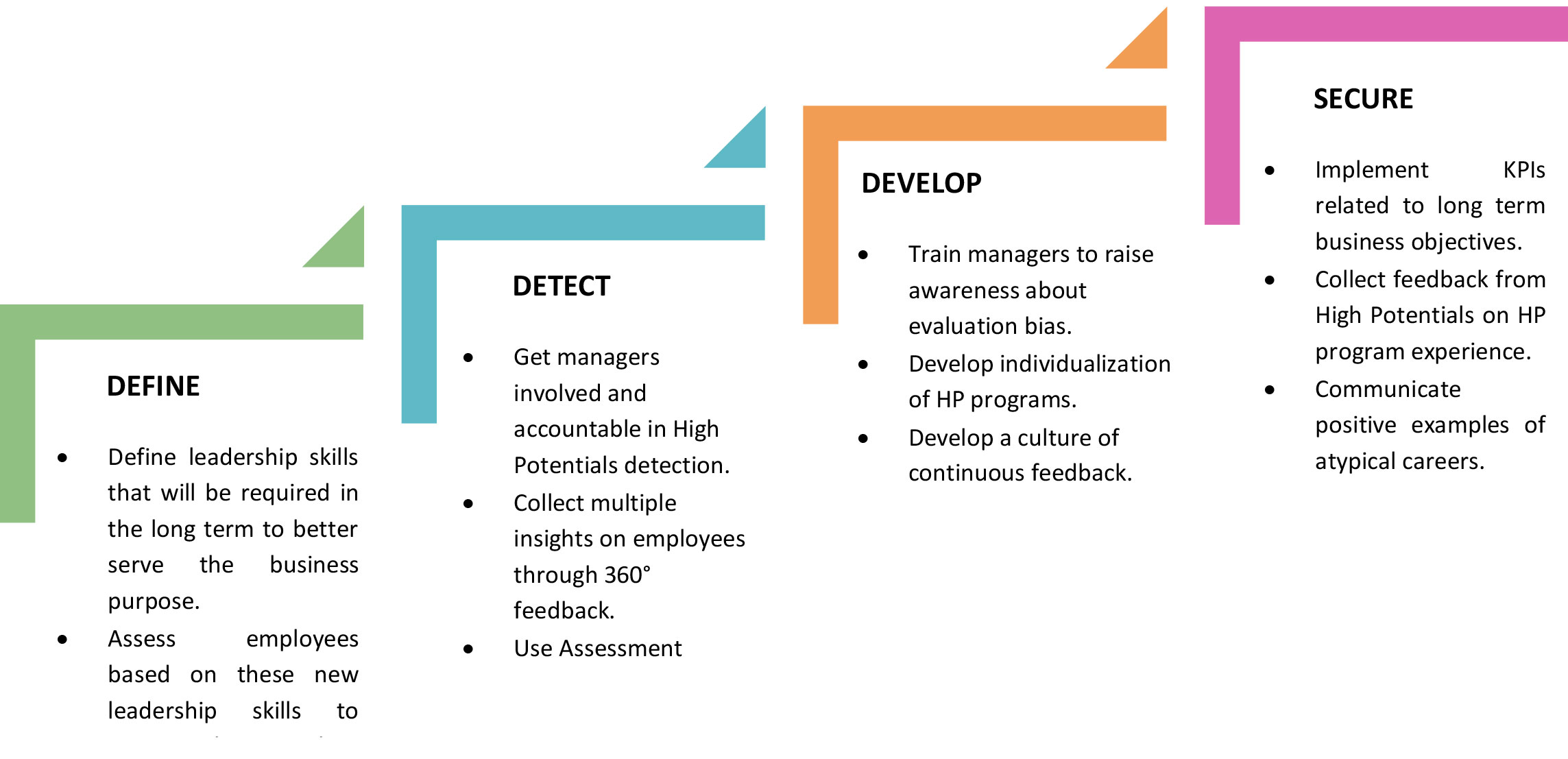High Potentials, through their specific abilities and skills, are accountable for the organization’s future performance and success. In the meantime, HR is currently facing a major challenge retaining these talented individuals, as well as anticipate and secure the implementation of strategic positions, combined with a necessity to ensure leadership skills development across the organization.
According to our 2019 High Potentials survey, a person is tagged as HP based primarily on their level of performance, followed by their self-development ability, learning ability and capacity to deal with uncertainty and complex environments.
The weight of each of the criteria mentioned above varies according to the companies. However, using these factors to predict potential has limits, if not possible risks:
- Performance is the most widespread criteria for detecting a HP. However, there is no obvious correlation between performance on the current job and performance in the next job. Also, very few companies have figured out which leadership skills will be required to achieve business ambitions in the long term and assess their people based on this set of skills. Consequently, do talents today have what it takes to serve tomorrow’s business ambitions?
- Managers stand in the front line when it comes to detecting talents. Whilst this gets them positively involved in this approach, there is still a significant risk they would feel tempted either to hide their talents or to identify “clone profiles” of themselves – and therefore miss out on talents that they feel are too different from them in terms of education, career path, personality traits, etc.
- According to our survey, half the participating companies are addressing diversity, but only through the lens of gender equality. Other aspects of diversity such as experience, training, or education for example – are not or not enough taken into account.
In order to avoid bias when dealing with High Potentials management, several actions can be implemented at every step of the process.








